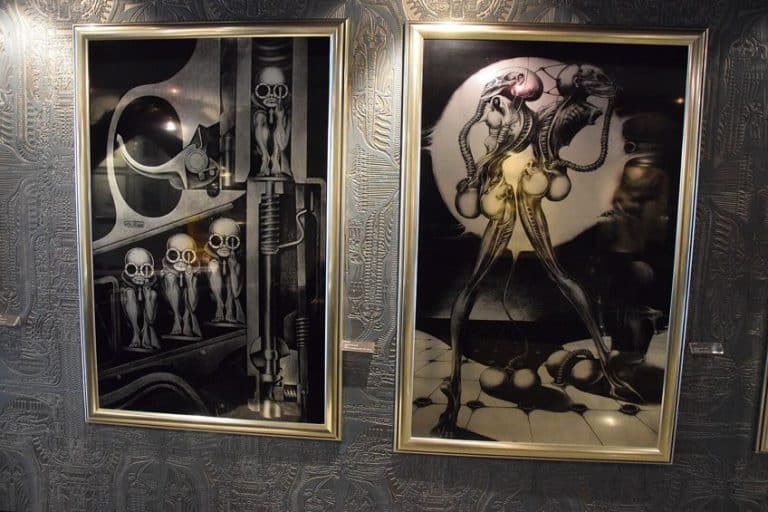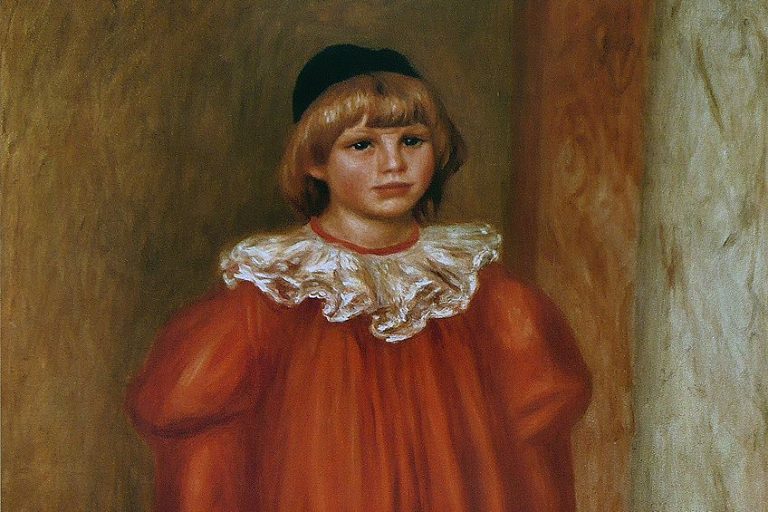“View of Toledo” El Greco – Analyzing the “Vistas de Toledo” Painting
View of Toledo by El Greco is among the first landscape artworks in the art of the Western world. and one of just two remaining El Greco landscape paintings. The other is Toledo’s View and Plan (1610). Vistas de Toledo is another name for the famous landscape painting. El Greco’s Toledo painting depicts the artist’s favorite city.
The Painter of Toledo, El Greco
El Greco’s work and life were characterized by a profound dedication to God. He felt impelled to become a painter as a young person, and he acquired a longstanding legacy of Byzantine icon work, but by the time he ultimately arrived in Spain, his motivation was mostly derived from the blossoming Spanish and Italian Renaissances.
Although his early intentions were to become a court artist, his distinct technique, which started to develop in Spain, swiftly propelled him beyond the bounds of any traditional institution.
He became fascinated by the emerging Mannerism style, which rejected the simple reproduction of reality in art in favor of expressing the deeper cerebral components of a piece beyond its mythical or theological subjects. These ideas influenced a collection of works that is powerfully suggestive of the Divine and widely recognized for expressing the mysticism that lies behind all existence.

The painter of Toledo, El Greco, is mostly remembered for his excruciatingly stretched figures created in fanciful coloring that, with its stark crispness, resembles chalk. These idealized, expressionist shapes formed a new visual conversation that moved away from established techniques of depiction in Classical art, building on Byzantine traditions but embracing Mannerism’s divergence from realism. The primacy of creativity and instinct above personal characterization was a crucial element in El Greco’s approach, enabling him to reject traditional standards such as measurement and ratio.
Rather, he used tactics like severe foreshortening to question people’s preconceptions of the conventional.
The painter’s work is characterized by a penchant to exaggerate rather than depict, which is expressed through vivid, surreal color combinations and the contrast of brilliance adjacent to dark, thick shapes. These stark opposites cause an emotive transmission from the picture to the observer. El Greco’s artwork has also been recognized as a predecessor to Expressionism due to its depiction of the emotive in hitherto unarticulated ways. Because of the manner in which his works explored shape and character beyond physical reality, he is thought to have influenced the Cubists, especially Pablo Picasso.
View of Toledo by El Greco
| Year Created | c. 1600 |
| Medium | Oil on Canvas |
| Dimensions | 121 cm x 108 cm |
| Currently Housed | Metropolitan Museum of Art, New York City |
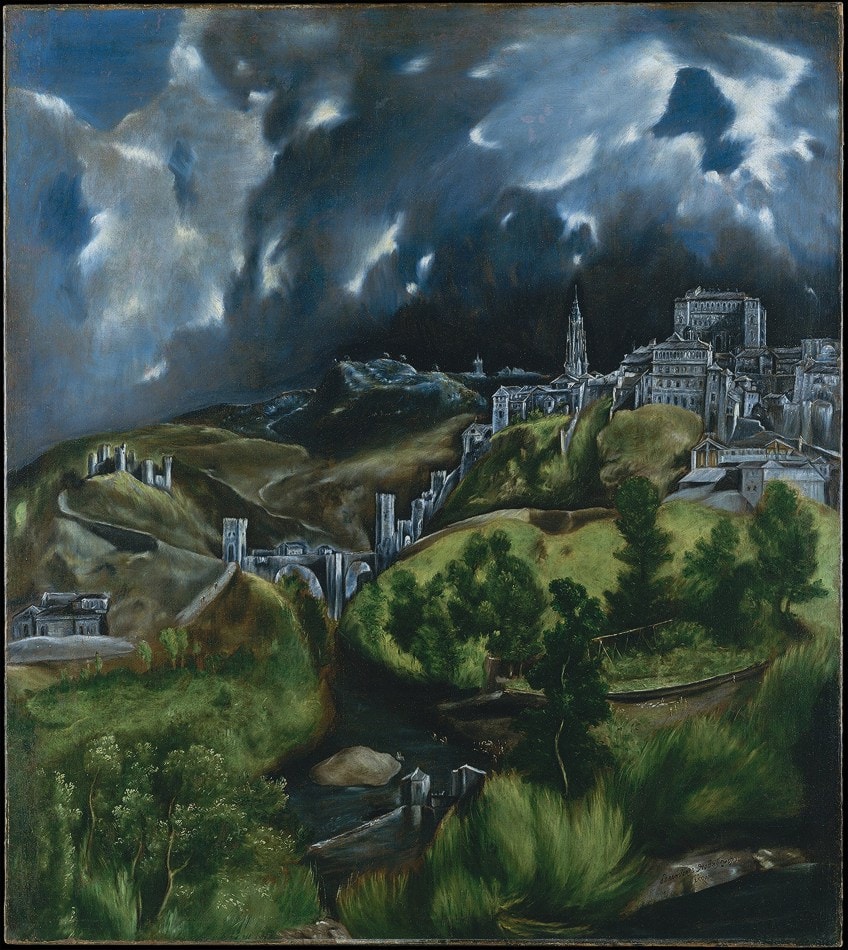
Historical Context of Vistas De Toledo
View of Toledo’s exact date of origin has been debated by art historians. Due to early writings written on El Greco, there was a significant dispute among art historians. According to the early literature mentioned by Walter Liedtke, El Greco’s Toledo painting was produced after 1600 and soon before El Greco’s death in 1614. Yet, due to the obvious parallels to El Greco’s other work, Saint Joseph and the Christ Child (1640), other art experts believe it was produced between 1595-1600.
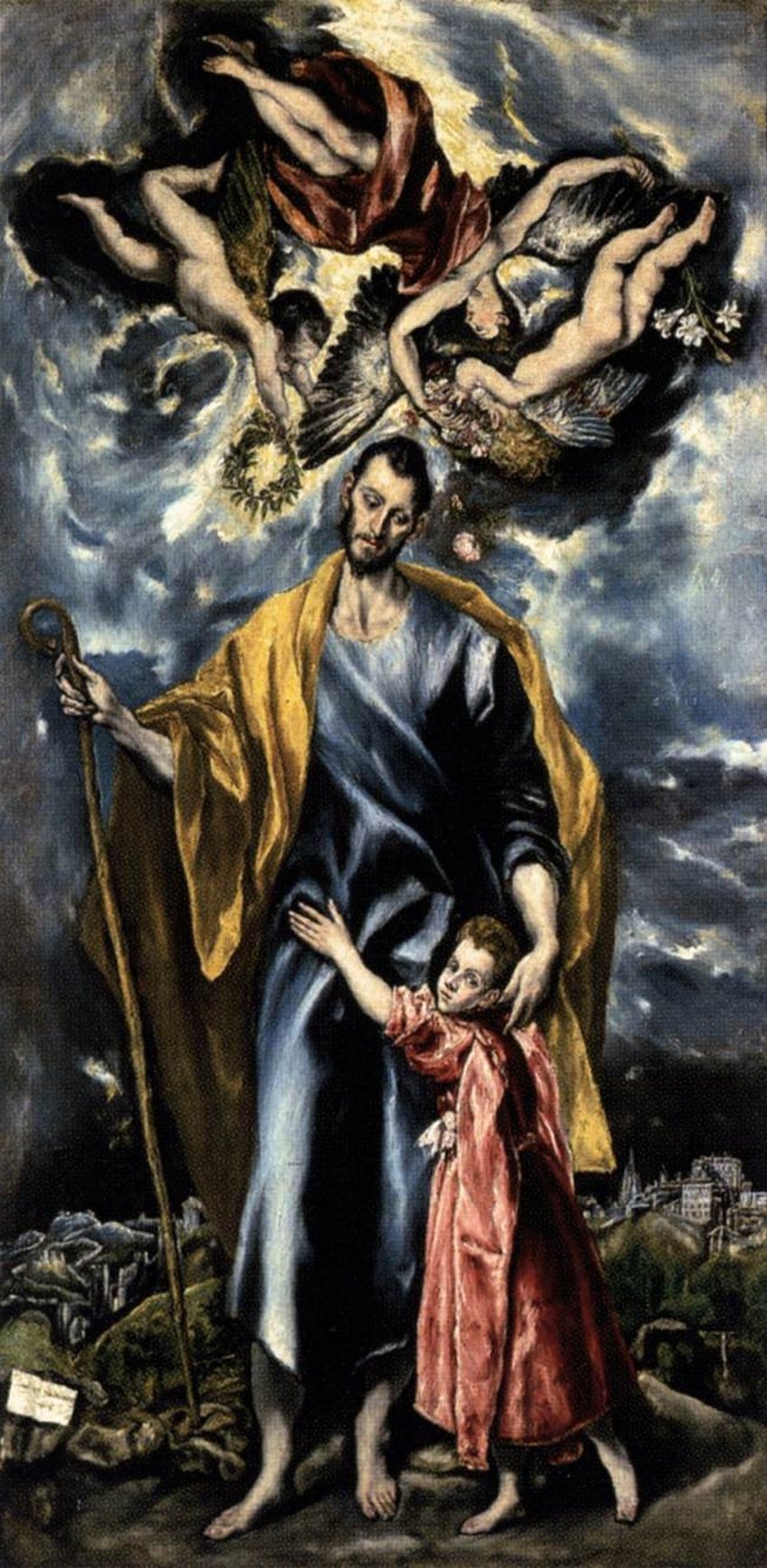
They support this hypothesis by stating that Saint Joseph and the Christ Child was finished between 1597 and 1599. They also add to the data by noting out the similar tactics employed in the backdrop of two famous paintings. Landscape paintings were uncommon in Baroque and Renaissance Spanish art. Because landscape canvases are so uncommon, some assume that View of Toledo is part of a bigger work. However, there has been no conclusive verification or confirmation of this.
The Council of Trent’s prohibition on paintings gives weight to the assumption that this piece was the first of its kind in Spain.
The Style of the Famous Toledo Painting
El Greco’s style is distinct, influenced by Spanish, Italian, and Greek painters. El Greco’s art style evolved throughout the course of his career in response to the areas he resided. However, he virtually always painted with Greek or Cretan influences. He frequently penned in Greek and utilized the Greek script rather than the Alphabetic characters. View of Toledo‘s signature follows the heritage of his Greek ancestors. Domenikos Theotokopoulos, his true name, was always signed on his artwork.
The signature of El Greco appears in the bottom part. El Greco’s style was regarded as being more erratic.

The inconsistent detailing that is typical of his works may be noticed in his linework as well as in Toledo’s geographical placement in the picture. While inspired by the Mannerism movement, El Greco’s emotive use of color and shape is unparalleled in art history. According to art historians, the ideas of Platonism, the writings of Pseudo-Dionysius, and the scriptures provide essential insights into El Greco’s style.
Summing up the subsequent scholarly argument, José Alvarez Lopera finds that the existence of “Byzantine recollections” is clear in El Greco’s mature paintings, albeit certain ambiguous problems surrounding his Byzantine roots require additional light.
Interpretations of El Greco’s Toledo Painting
In the famous artwork, the city of Toledo is placed at the summit of the hill. art historians speculate that El Greco sought to underline Toledo’s glory. Toledo’s location at the top of the hill signified the city’s status as being close to heaven while still being at the pinnacle of the hill, rendering it of earthly property.
Employing medieval traditions, El Greco included monuments such as the church and the Alcázar into his depiction of the “city of the soul.” Toledo is at its highest elevation without appearing artificial or in the skies, as though El Greco utilized the slopes as a platform. The complex meaning of this picture is supposed to be tied to the mysticism that pervaded the city at the time.
The Other Toledo Painting
View of Toledo was not the only artwork by El Greco to portray this city. The other is known as View and Plan of Toledo and was produced between 1600 and 1610. Both paintings use the same city as the focal point of their images, but they have quite distinct appearances and messages. To begin with, View of Toledo was completed before the latter.
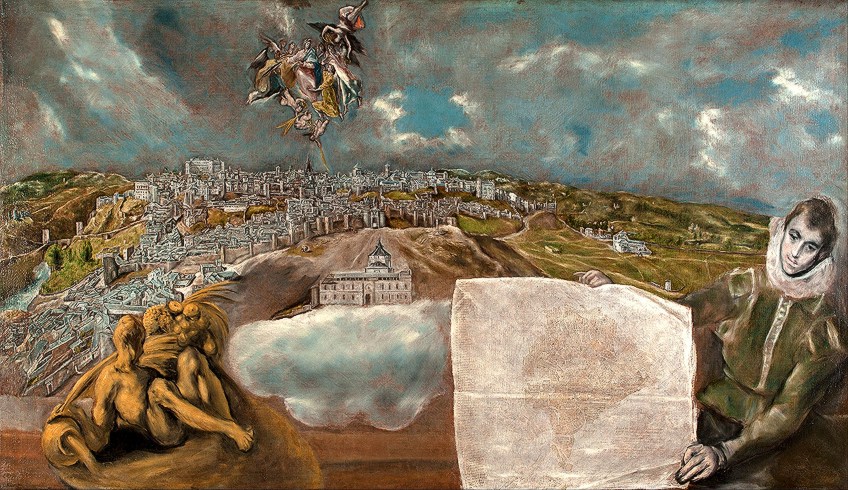
With all of the white and green juxtaposing the darker black and blue, it creates a more vivid sense. Toledo’s view and plan have a considerably warm and earthy feel to it, with lots of brown shades. In addition, it is an aerial viewpoint, as opposed to the View of Toledo. They couldn’t be more different for being Toledo artworks. Nevertheless, they were thought to have been commissioned by Salazar since they were discovered in his private library after his demise.
Salazar was deeply committed to Toledo in every way. It is said that Salazar’s love of the city prompted El Greco to create both works.
Description of View of Toledo by El Greco
Black, white, blues, and brilliant greens dominate the picture. It is entirely composed of earth tones. The most noticeable color contrast is between the blackness of the heavens above and the vibrancy of green in the hills beneath. View of Toledo depicts the gloom or mood changes that may be found in Toledo. Spectators may notice that the sky darkens dramatically near the city.
El Greco employs a vibrant color scheme.
People may perceive the contrast between light and dark when looking at View of Toledo. Rolling hills are represented, with Toledo at the top. The drab of Toledo stands in stark contrast to the brilliant green of the hillsides.
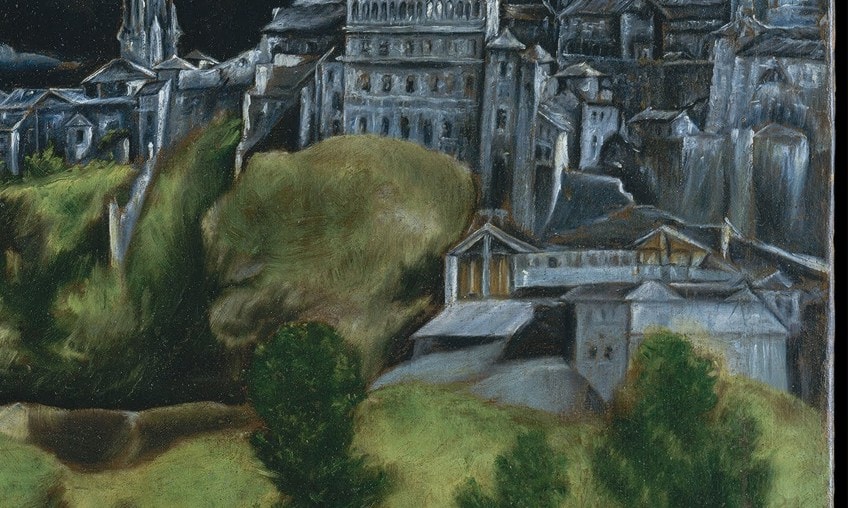
On the other end of the spectrum, the city itself presents a bright contrast against the dark tone of the sky. El Greco makes good use of pure hues. On the left, the site of the Castle of San Servando is appropriately shown. Many other monuments that plainly refer to Toledo, on the other hand, are not in the exact position that is authentic to the city. Some say this is because El Greco created the View of Toledo as a vision of what it may look like in the future.
Art historians have also suggested that El Greco portrayed Toledo in a different style to meet his vision or ideal picture of Toledo.
Landscape artworks are frequently intended to chronicle the appearance of a specific period in a specific place, capture a single instant, and keep it for posterity. El Greco’s Toledo, on the other hand, does not. Although the big church is in the exact position in the city, El Greco relocated numerous other structures, demonstrating that research was not the artist’s primary priority.
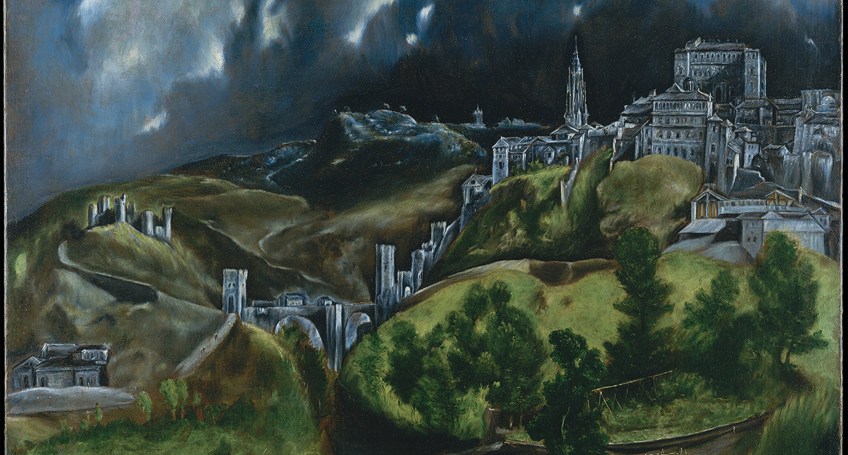
Rather than telling us what Toledo looks like, El Greco conveys how the place felt. Toledo becomes a vehicle for the artist to communicate an inner psychological condition and, maybe, a viewpoint on the meaning of man’s connection with the almighty.
El Greco depicted the Spanish city of Toledo at the summit of a sloping hill in trademark dark, somber tones.
The town itself occupies only a little amount of area in the artwork’s middle. The countryside and sky take center stage. This isn’t any ordinary sky. El Greco’s clouds are set to split apart, bringing a thunderstorm to the area. The houses themselves appear to move over the canvas, and the curved lines across the hill create the idea that the panorama is moving as if it is living. This gives the impression that something is going to occur in El Greco’s Toledo, but it’s not going to be pleasant. Several little people, equipped with weapons, are hunting in the shoals, as a person on horseback traverses the stream.
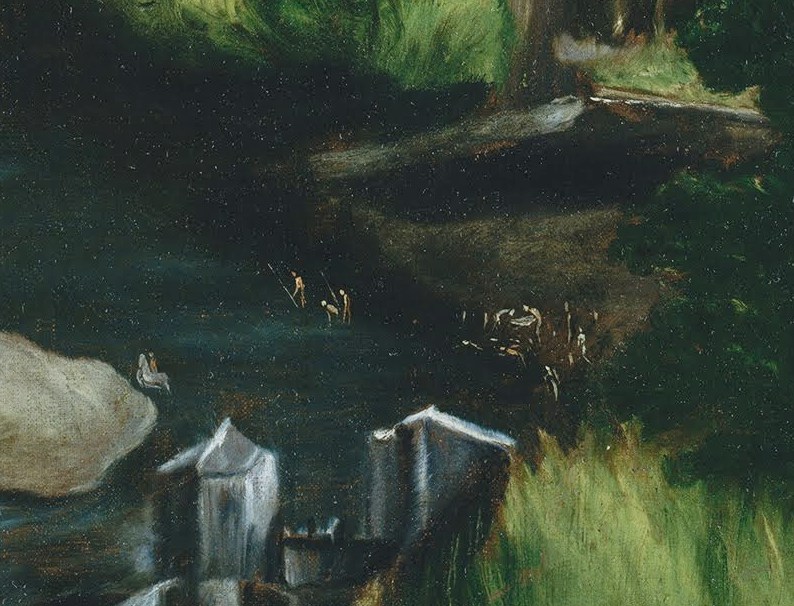
The painting’s composition includes numerous notable elements. Take special attention to the color contrast between the lowering, gloomy sky above and the brilliant greens of the hills below. Take note of the restless swirl that pervades the whole image, which gives credence to the notion of some art experts that the painter was representing the mysticism that filled the city at the period.
In any case, the sweeping sky, which dominates the painting and lends the city its gloomy tone, is undoubtedly El Greco’s effort to express something of the all-encompassing authority and strength of God’s presence.
But he doesn’t stop there: he still finds time to include some human-life elements. He shows reflections in the stream and laundry strewn out on the earth down from the Alcantara footbridge using small brush marks.
The Uniqueness of Landscapes in El Greco’s Era
To grasp how radical this artwork is, we must consider a few historical factors. For starters, El Greco was producing art in Counter-Reformation Spain, where theological restrictions centered on the Council of Trent (which concluded in 1563) prohibited landscape paintings as an acceptable subject. Despite the fact that the clergy was his principal client, the artist defied tradition, and View of Toledo has been dubbed the “first Spanish landscape.”
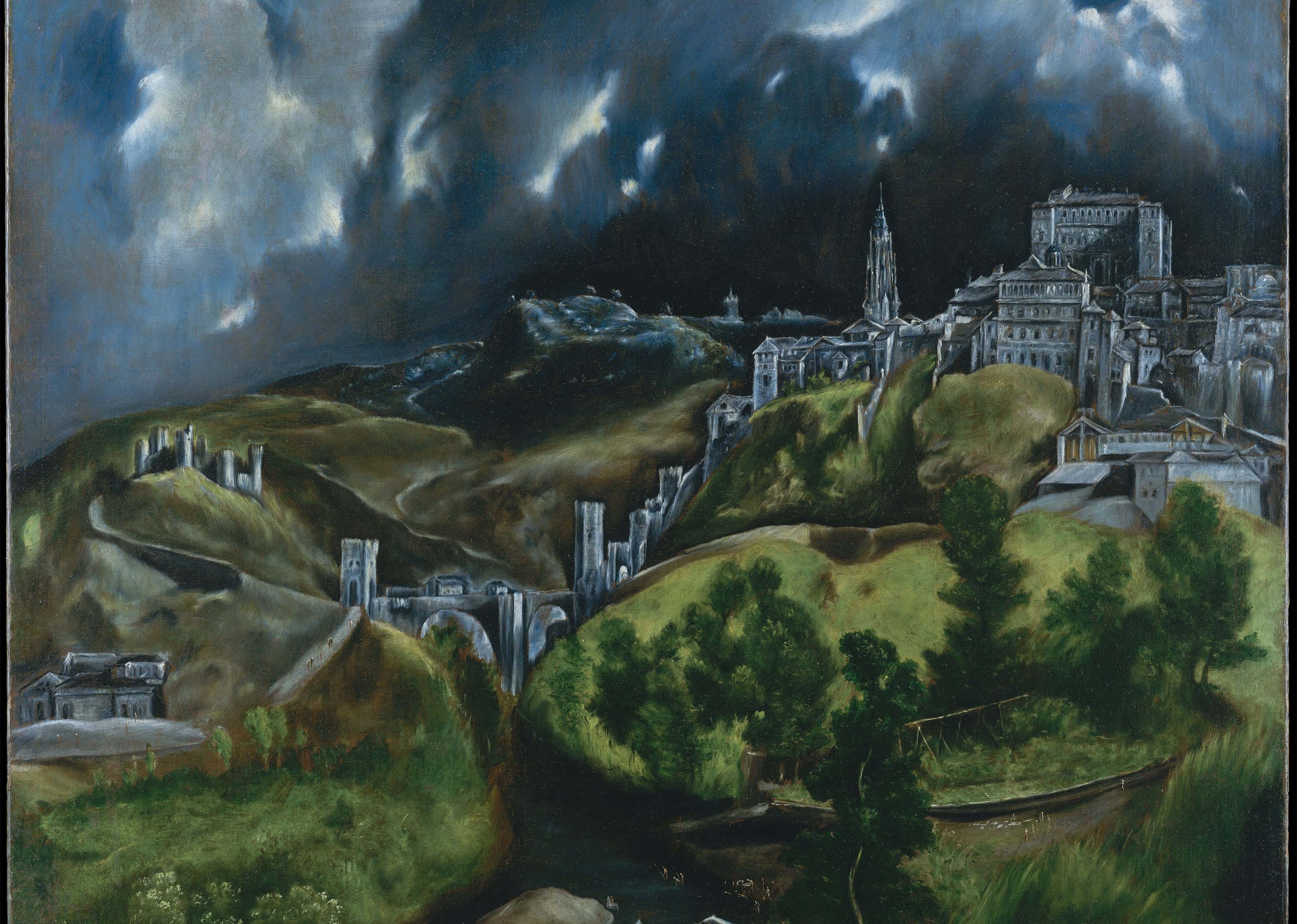
More astonishingly, cityscapes did not exist in the 16th century. El Greco may have literally founded the genre. Some art historians were so disturbed by this that they speculated that because El Greco frequently featured views of Toledo in the backdrops of his artwork and portraiture, View of Toledo may have been clipped from the backdrop of a bigger picture. We now know, though, that this is not the case.
The City on Which the Vistas De Toledo was Based
El Greco is best remembered as a Spanish painter, yet he was born in Crete and lived much of his time in Italy. He was schooled in the Byzantine icon art style in Venice, where so many Cretans had migrated, and by the 1560s was working in Titian’s studio. He visited Rome in the 1570s. Although El Greco was well-known in Italy, he was unable to gain any orders in the city and was persuaded to go to Toledo by a Spaniard, where he lived the remaining 40 years of his life and perished in 1614.
Why was the city of Toledo so inspiring to El Greco to paint such a strong portrait of it?
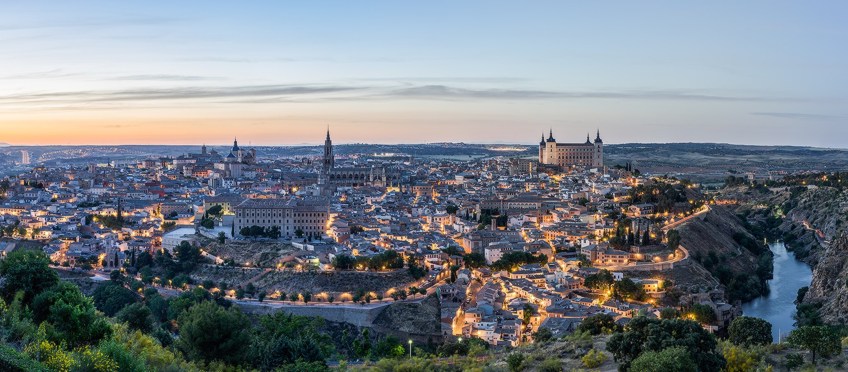
El Greco did not find popularity with the king in Spain and rather painted for the Catholic Church. He would very definitely have had to convert to Catholicism if he had not been nurtured in the church. The Catholic Church in Spain had experienced significant changes by the 1500s. The century began with the Spanish Inquisition, during which non-Catholics were tracked down, tried, tormented, and, in many cases, executed. At the very same time, Christians like Saint Ignatius of Loyola were proclaiming that one may be personally prompted by God via prayer, and they professed to have regular visions in which God talked to them.
Even these martyrs were investigated by the Inquisition because of their views, but they were finally acquitted. In comparison to Italy, Spain’s Catholicism was mystical and driven by personal experiences.
The Mysticism of the Toledo Painting
El Greco’s Toledo reflects this mysticism. The city appears to be at the hands of God, almost fully absorbed by the countryside. This is a vengeful God, not a compassionate one, as in the Old Testament. Toledo is facing a confrontation. At the same moment, the landscape goes beyond this religious interpretation. It reflects the inner turmoil of every human being, the sense that forging one’s place in the world is a perilous task. View of Toledo was generations ahead of the times, and it is most likely best comparable to The Starry Night (1889) by Vincent van Gogh, which has many similar structural characteristics such as an overwhelming nature, swirling skies, a skyline featuring a church.
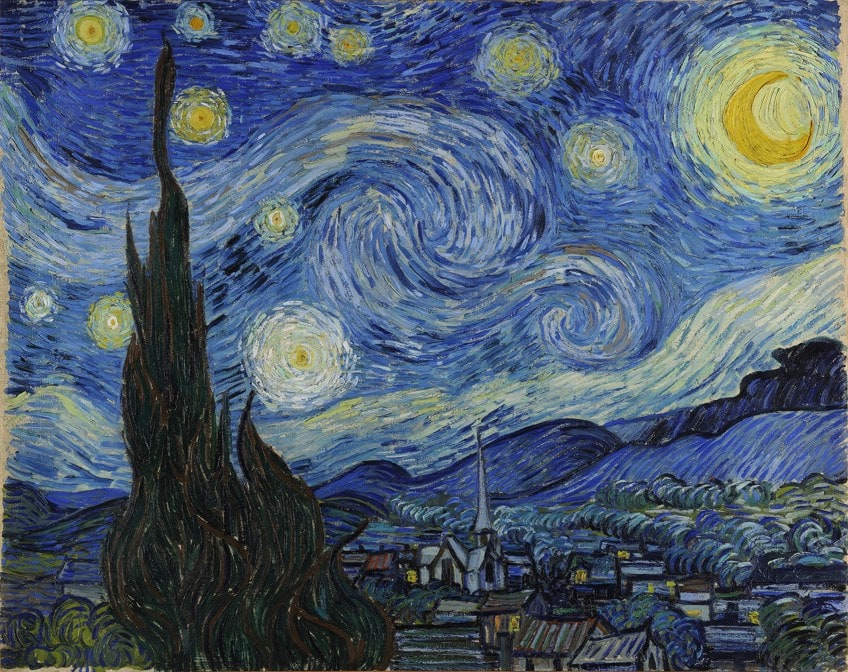
However, whereas van Gogh’s picture conjures the tranquility of a sleepy village, El Greco’s work portrays the ferocity of the external world versus an inside one. In this sense, View of Toledo is similar to Giorgione’s The Tempest (1508), in which a lightning strike and an impending storm endanger a lady and baby reclining in the countryside. El Greco warns us that we live in an unpleasant environment and that we are all vulnerable to circumstances beyond our influence. He left it up to us to determine whether we shall submit or triumph.

Interesting Facts About the Vistas de Toledo Painting
- This is the tiniest of El Greco’s two remaining landscapes. It is probable that View and Plan of Toledo was completed in 1608. Despite the presence of a magnificent sky, the movement of this picture is totally different.
- The skies are one of the most well-known subjects in Western art. The painting’s stunning sky takes center stage. It is one of the most iconic renderings of the sky in Western art, with bright colors of black, white, green, and blue.
- It’s not the painter’s first time using a similar backdrop. One of the most intriguing aspects of View of Toledo is that the artist also employed a spectacular backdrop in another work. Saint Joseph with the Christ Child (1599) is the title of this picture. Even better, El Greco painted both backgrounds using the same method. This lends credence to the notion that both pictures were made around the close of the 16th century.
- One of the structures featured goes back to Roman times. The bridge over the river is one of the artwork’s most notable features; it was initially erected by the Romans when the area was still known as “Toletum.” This bridge has been one of the most significant buildings in the history of the city. It was severely damaged in the 10th and 13th centuries and was only partially reconstructed after that.
And that concludes our look at the famous “View of Toledo” by El Greco. “View of Toledo” by El Greco is among the first landscape artworks in the art of the Western world. and one of just two remaining El Greco landscape paintings. The other is “Toledo’s View and Plan” (1610). “Vistas de Toledo” is another name for the famous landscape painting. El Greco’s Toledo painting depicts the artist’s favorite city. The painting does not accurately portray the city but does capture the essence of the region.
Frequently Asked Questions
Who Was the painter of Toledo?
Few painters deviate more sharply from the typical narrative of Western painting than El Greco, the famous misfit of the 16th century. Deeply pious and solitary, he blended three separate nations’ art styles to create his own unique pictorial language. El Greco communicates with secular museumgoers more effectively than many spiritual painters of the 16th century. We might perceive his altarpieces and portraiture as dramatic explorations with shape and function, or we can discern the presence of the abstract in his tensioned forms. However, examining El Greco’s effect on modern painters allows us to understand not just what is eternal in the artist’s work, but also what is not. Placing El Greco beside the moderns can help us perceive media studies as more than a sequence of lines but as a multi-directional discourse that disrupts time itself.
Why Is View of Toledo by El Greco So Famous?
Threatening, whirling clouds are penetrated by light, illuminating the outlines of the hills, the curvature of the roadways, and the out-of-place greenery. The rain may burst at any time and wipe off the view before us, but El Greco has assured us that it will never happen by capturing it in painting. View of Toledo, a precursor to 17th-century Baroque painting, is the greatest expression of Mannerist Romanticism, with its threatening, even apocalyptic mood and somber colors. This is a masterwork of Spanish painting and a terrific instance of El Greco’s sometimes tormented, always victorious art.
Why Was El Greco’s Toledo Painting the First Landscape Artwork?
To begin with, El Greco was creating art in Counter-Reformation Spain, where religious limitations based on the Council of Trent (which was completed in 1563) barred landscape paintings from being acceptable subjects. Despite the fact that the clergy was his primary client, the artist bucked convention, and View of Toledo has been referred to as the “first Spanish landscape.” Surprisingly, cityscapes did not exist in the 16th century. El Greco may have invented the genre. Some art historians were so outraged by this that they theorized that because El Greco commonly used views of Toledo in the backgrounds of his artwork and portraiture, the View of Toledo may have been cut from a larger piece. However, we now know that this is not the case.
Alicia du Plessis is a multidisciplinary writer. She completed her Bachelor of Arts degree, majoring in Art History and Classical Civilization, as well as two Honors, namely, in Art History and Education and Development, at the University of KwaZulu-Natal, South Africa. For her main Honors project in Art History, she explored perceptions of the San Bushmen’s identity and the concept of the “Other”. She has also looked at the use of photography in art and how it has been used to portray people’s lives.
Alicia’s other areas of interest in Art History include the process of writing about Art History and how to analyze paintings. Some of her favorite art movements include Impressionism and German Expressionism. She is yet to complete her Masters in Art History (she would like to do this abroad in Europe) having given it some time to first develop more professional experience with the interest to one day lecture it too.
Alicia has been working for artincontext.com since 2021 as an author and art history expert. She has specialized in painting analysis and is covering most of our painting analysis.
Learn more about Alicia du Plessis and the Art in Context Team.
Cite this Article
Alicia, du Plessis, ““View of Toledo” El Greco – Analyzing the “Vistas de Toledo” Painting.” Art in Context. December 31, 2021. URL: https://artincontext.org/view-of-toledo-el-greco/
du Plessis, A. (2021, 31 December). “View of Toledo” El Greco – Analyzing the “Vistas de Toledo” Painting. Art in Context. https://artincontext.org/view-of-toledo-el-greco/
du Plessis, Alicia. ““View of Toledo” El Greco – Analyzing the “Vistas de Toledo” Painting.” Art in Context, December 31, 2021. https://artincontext.org/view-of-toledo-el-greco/.








